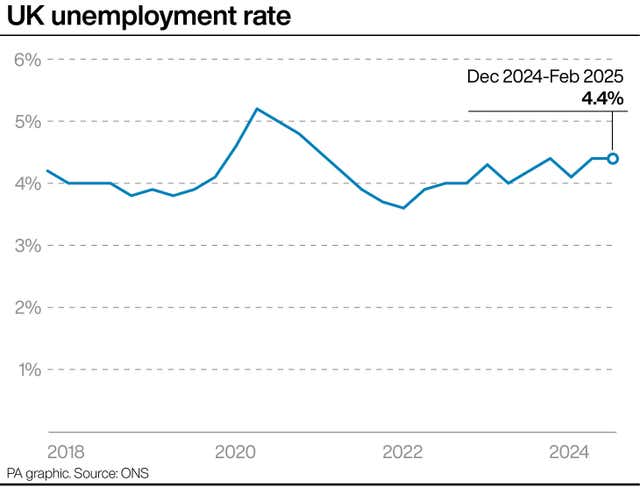UK wages grow by 5.9% as job vacancies tumble
The availability of jobs worsened further, with vacancy numbers dropping to 781,000 for the three months to March, the ONS said.

UK wages continued to grow after recent public sector pay increases while the number of job vacancies fell to their lowest level since the Covid pandemic, official figures have revealed.
The Office for National Statistics (ONS) said average weekly pay grew by 5.9% for the three months to February.
This was the same as the previous quarter, which had been the highest level since April last year.
Pay growth, including bonuses, was 5.6% for the period, in line with market expectations.
Meanwhile, the availability of jobs worsened further, with vacancy numbers dropping to 781,000 for the three months to March.

This meant it fell below pre-pandemic levels in 2020 for the first time.
Wages outstripped inflation by around 3% once inflation is taken into account, with this 2.8% above inflation including bonuses.
Inflation surprisingly dipped to 2.8% in February after the prices of clothes and shoes fell for the first time in more than three years.
Elevated levels of wage growth will be considered by Bank of England officials when they vote on whether to reduce interest rates from their current level, 4.5%, at their meeting next month.

It came as the UK unemployment rate remained at 4.4%, according to the data.
The statistics body also revealed that the employment rate, for people aged between 16 and 64, was 75.1%.
Last year, Labour said it planned to increase the UK employment rate to 80%.

ONS director of economic statistics Liz McKeown said: “Regular pay growth remains strong having increased slightly in the latest period.
“Growth accelerated in the public sector as previous pay rises fully fed through to our headline figures, while pay in the private sector was little changed.
“The latest survey results estimate that the unemployment rate is unchanged on the previous three months, while separately the number of employees on payroll fell slightly over the same period.”

Monica George Michail, NIESR associate economist, said: “The recent rise in the national minimum/living wage in April is expected to keep earnings growth elevated in the short run.
“However, with high uncertainty around the economic outlook and slowing hiring activity, wage pressures are expected to ease gradually.”
Matt Swannell, chief economic adviser to the EY Item Club, said: “The unemployment rate was unchanged at 4.4% across December to February, but continued issues around data reliability mean this reading should be taken with a pinch of salt.
“Payrolled employee numbers declined over the three months to February, while job openings nudged down too.
“The large increase in US tariffs and the associated policy uncertainty will likely see UK GDP growth slow and unemployment rise over the rest of this year.”





